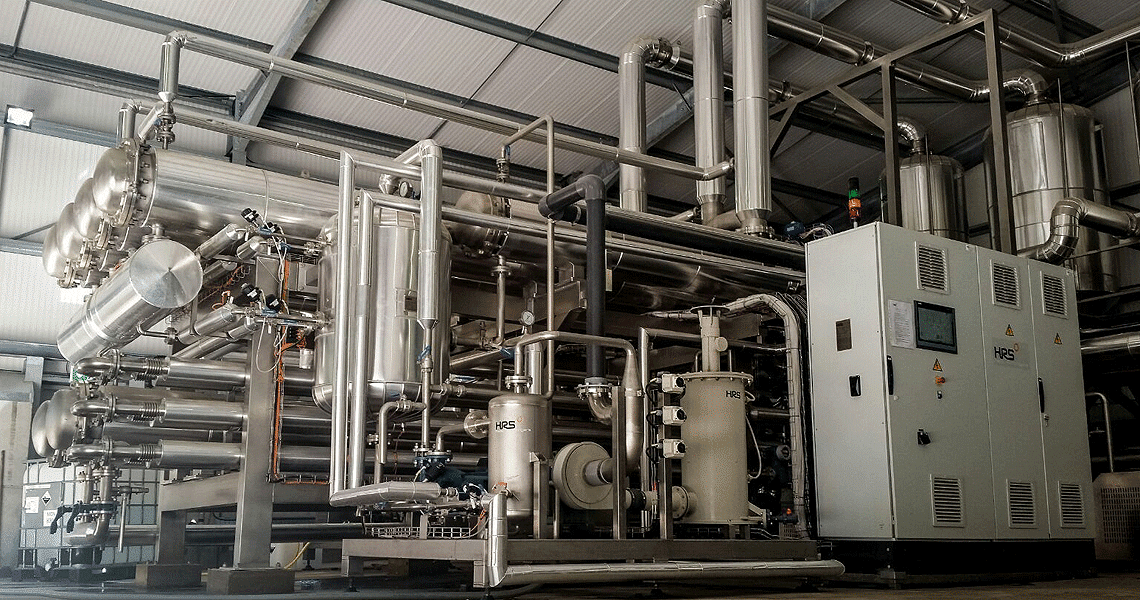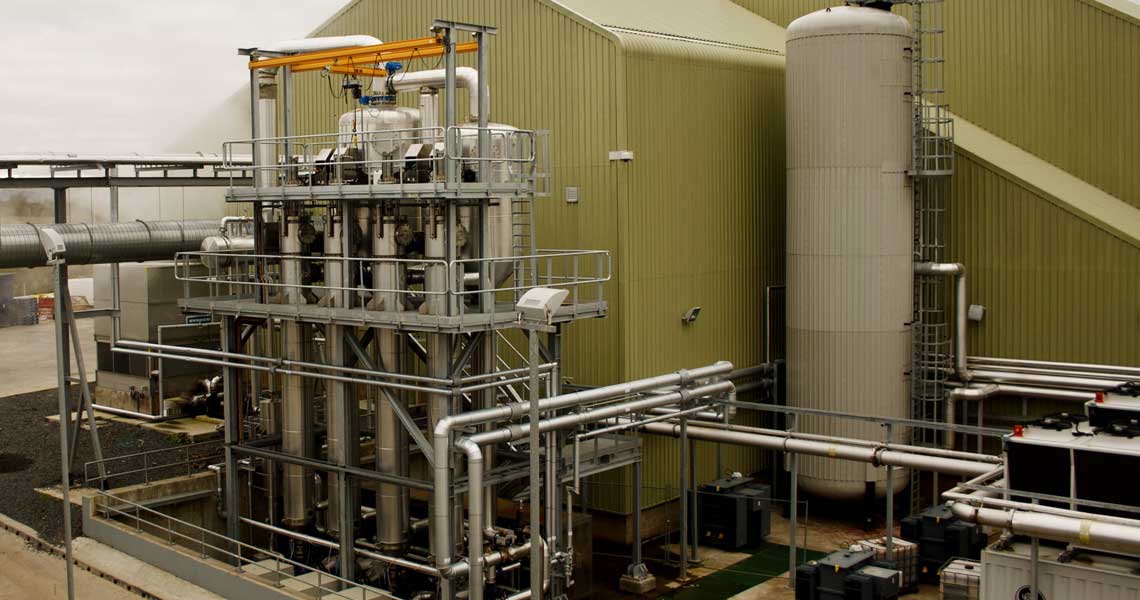Concentration of Environmental Waste for Renewable Energy (DCS)
The HRS Digestate Concentration System (DCS) reduces the volume of digestate from anaerobic digestion while increasing its value. In most situations, it is able to do this using surplus heat from the CHP engine or biogas boiler, which can be used up to four times by incorporating multi-effect evaporation technology.
The numerous benefits of the HRS DCS system include:
-
Removal of up to 80% of the water volume to produce a material containing 20% dry solids;
-
Increase the nutrient concentration of the digestate accordingly with minimal loss of nutritional value;
-
Reduces the handling, storage, transportation and application requirements along with associated operational, overhead and capital cost savings. For example, the amount of storage (and transport) required can be halved;
-
Water removed from the digestate can be added to the feedstock before digestion to improve process efficiency and create a closed loop system;
-
The heat involved in the DCS process is recovered and re-used up to a maximum of four cycles, resulting in a highly efficient process;
-
Reduces odours and increases nutrient content by turning ammonia into ammonium sulphate;
-
Unlike conventional digestate dryers – which use a lot of power to create a small amount of product – the DCS is extremely energy efficient;
-
No additional energy or water is required, and none is wasted, either.
- As a plug-and-play, fully automated system, the DCS is completely flexible and can be tailored to suit each individual operation.
The HRS Digestate Concentration System (DCS) works by superheating the digestate in a vacuum to facilitate concentration, using evaporation to significantly reduce digestate volumes while, at the same time, increasing the nutrient content.
The first part of the DCS process involves heating the liquid digestate in heat exchangers; no additional water or energy is required, as the surplus water from the plant’s CHP engine (which is usually available at 85˚C) is used as the heating media. The digestate is then pumped into a cyclone separator; the high speed rotating airflow causes the solid particles (which are too heavy to follow the tight curve of the airstream) to fall to the bottom of the cyclone, where they can be removed.
The steam produced from this first cycle (usually available at 70˚C) is then used as the heating media for the second effect, whereby the process is repeated. The subsequent steam (usually available at 60˚C) is used as the heating media for the third cycle – the number of effects is determined by the level of dry solids required, and the amount of spare heat available, up to a maximum of four cycles. After the final effect, the steam is condensed back into water and can then be used to dilute feedstock going into the front end of the digester; a completely closed loop system. The DCS is wholly self-sufficient – no energy or water is brought in or wasted, and everything is re-used.


